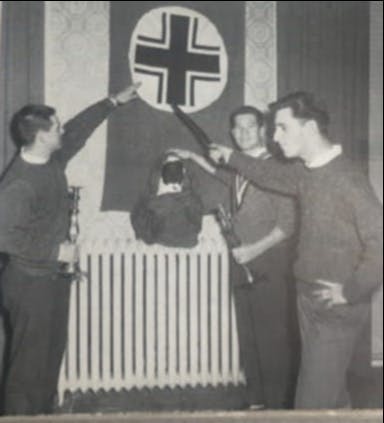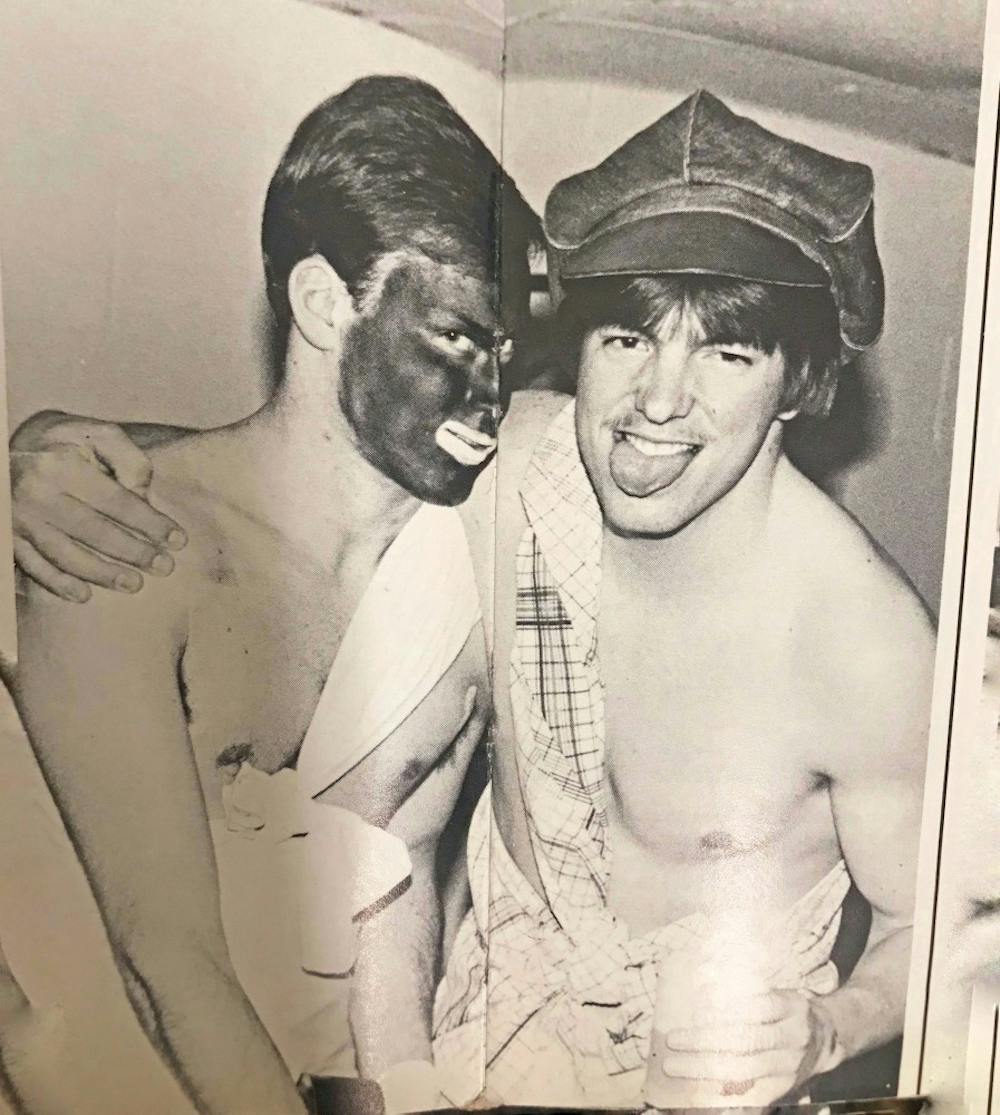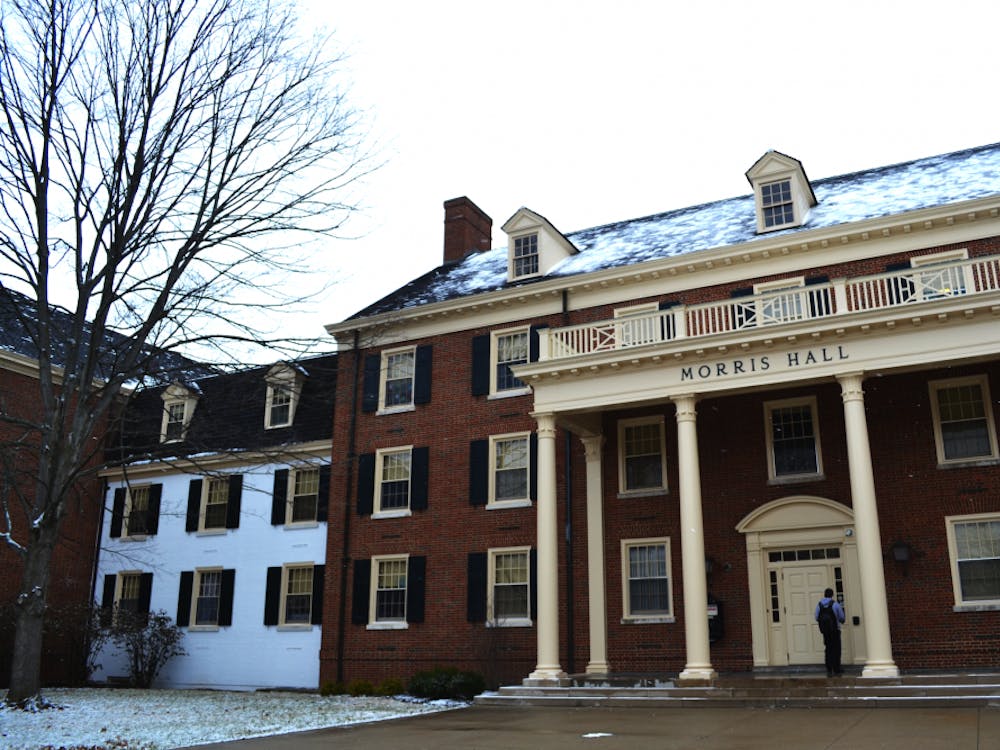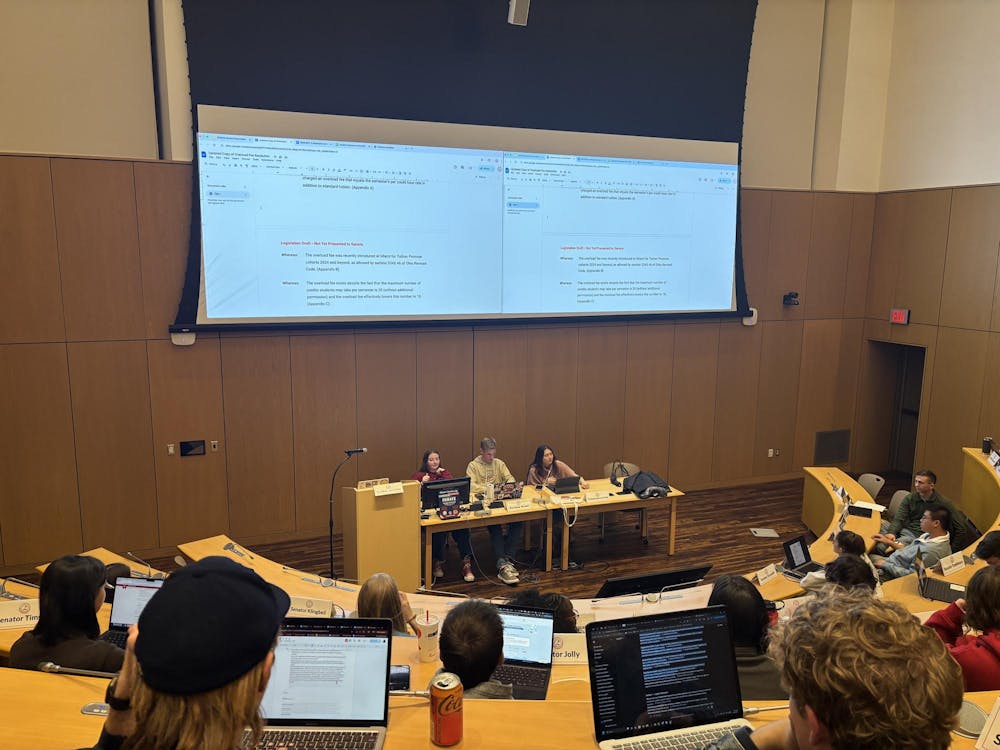Blackface - The act of wearing black makeup to appear as a caricature of a black person.
The word was catapulted back into national headlines when photos surfaced of Virginia governor Ralph Northam's medical school yearbook, in which a photo depicted a student wearing blackface standing next to a student in a Ku Klux Klan (KKK) hood. This finding inspired USA Today to look into the yearbooks of over 900 universities across the country to see how many instances of racism could be found.
USA Today's research uncovered countless instances of blackface, KKK hoods and even mock lynchings. Their discoveries prompted The Miami Student to look into Miami University's own history of racism through Recensio, Miami's former yearbook publication. (Recensio is now published once a year in The Miami Student as an insert composed of senior photos). The Student examined every available edition from 1960 to 2013, the last year King Library has on record.
After looking through 50 yearbooks, our staff found at least 23 instances of racist imagery.
All of The Student's findings, with the exception of one photo -- a 1986 picture of Stanton Hall residents -- were from Greek organizations, many of which are still active on campus.
From 1960 to 1969, 13 instances of racism were depicted in the pages of Recensio.
There were four photographs of white students imitating traditional Middle Eastern dress, four photographs of students being mock-lynched, two photographs of blackface, one photograph showcasing students wearing white hoods, one photograph with a student wearing a Confederate flag and one photograph of students saluting a Nazi flag.
In the 1962 edition, three Delta Kappa Epsilon fraternity brothers are shown in a photo replete with racist imagery. One is saluting a Nazi military flag, another is brandishing a long blade and pointing it toward the flag, while a third holds a candelabra and rests his hand on a statue of a black man.

Three Delta Kappa Epsilon fraternity members in the 1962 issue of Recensio. Above the photo a caption reads: "Yet, despite annoyances, we take care never to let ourselves forget the focal point of all Miami life."
Of the 13 instances of racism printed in Recensio from 1960 to 1969, six came from 1968.
In that year's copy, a caption-less photo portrays a white man hanging limply outside the Delta Upsilon fraternity house, strung up by a rope running under his shirt.
His mouth is curled slightly into a smile.
Enjoy what you're reading?
Signup for our newsletter
In that same year, a group photo of the Delta Chi fraternity shows one man mock-lynching another. Two men stand behind them wearing white pointed hoods.
From 1970 to 1979, The Student identified six racist images in the pages of those Recensio issues.
Three photographs depict the Confederate flag, two are of mock-lynchings and one portrays a student as a Confederate soldier.
In the 1972 Recensio, Lambda Chi Alpha brothers pose for a photo in front of their house. In the front row, a white student is being pulled backward by a piece of cloth wrapped around his neck.
The student being "choked" feigns a shocked expression, while his "attacker" smiles.
In the 1977 Recensio, students pose outside the Chi Phi fraternity house. A man sits on the shoulders of another student. Rope extends down from a tree above, and disappears behind the man's neck.
He smiles intently at the camera.
From 1980 to 1989, there are seven documented instances of racism in the pages of Recensio.
Three images portray blackface, two images depict students imitating traditional Middle Eastern dress, one student is dressed as a Confederate soldier and one picture contains a Confederate flag.
On the fold between two pages of the 1982 Recensio, two white members of Alpha Epsilon Pi link arms at a party. The face in the middle of the fold is covered in black paint, with bright white around his mouth.
On the same spread, directly next to the photo featuring blackface, is a section recognizing the historically black sorority Alpha Kappa Alpha.
The last photographed incident The Student found -- the photo of Stanton Hall residents -- was taken in 1986. It depicts a student imitating Middle Eastern dress.
In 1997, Miami University changed its mascot from the Redskins to Redhawks after the Miami Tribe of Oklahoma said they could no longer support the use of Redskins as a mascot. The decision decision was met with backlash from students.
A headline in that year's Recensio read: "Goodbye Redskins, Hello Redhawks (yuck)."
[Editor's note: A previous version of this story included language that could be interpreted to indicate the Miami Tribe of Oklahoma threatened to withdraw broader support from Miami University. The Tribe only withdrew support for the use of Redskins as a mascot, and not in any other context.]
Though the number of racist photographs printed in Recensio dwindled to zero in the early 2000s, public displays of racist behavior still occurred on this campus.
One recurring racist event was "Ghetto Fest," an annual party imitating stereotypical black culture, which was held Uptown for nearly 15 years.
The event, though always public, came under fire in 2010 after a gay student was beat up in an Oxford bar, sparking an outcry against hate in the Miami community.
In 2018, racism publicly reared its head at Miami again with the circulation of a screenshot showing racist language in a residence hall group chat. This prompted a number of black students to resurrect the Black Action Movement (BAM). The new group, called BAM 2.0, made a list of demands and met with university officials to voice their concerns about the treatment of minority students on campus.
Just last semester, Associated Student Government (ASG) underwent internal strife after a video of two senators using racist language while rapping along to "Ultralight Beam" by Kanye West was circulated in multiple ASG group chats. The senators involved ultimately resigned.
The University has resources in place for Miamians to report bias incidents and hate crimes. Students, faculty and staff who have experienced, or witnessed such incidents can file a report at http://miamioh.edu/diversity-inclusion/programs-resources/report-incident/
Students who have been the victim of hate crimes or are experiencing difficulty with the social climate at Miami can find mental health resources at the Student Counseling Service.




